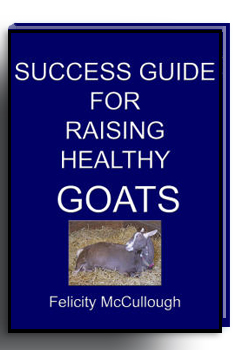Goat Fiber And Their Coats
Fiber Goats
Some goats have long hair that may be spun into yarn and woven, or knitted into fabric to make clothing, drapes, and upholstery. Two kinds of goat are known for their fine hair or fiber.
Angora
The Angora goat originated in the Himalayas and came to the rest of the world via Turkey. The name Angora is derived from Ankara, the Capital of Turkey. Angora goats are raised for their long, silky, wavy hair, called mohair.
Like sheep, Angora goats are sheared twice a year, in spring and fall. The average amount of mohair sheared from a doe per year is 10 to 14 pounds; a wether averages slightly more.
When selecting an Angora goat, spread the hair with your hands and notice how much pink skin you see. The less skin you see, the better. The best Angora goats have hair that is neither light and fluffy, nor dark and greasy. Avoid a goat with a chalky white face and ears; it is likely to have lots of straight, brittle, chalky white hairs, called Kemp, that are undesirable because they do not produce quality yarn. Pure mohair is creamy white.
Coloured hair results from crossing an Angora with some other breed. Naturally coloured mohair is popular among hand spinners, even though the hair of a crossbred goat is usually lower in quality and quantity than the hair of a pure Angora.
Angora goats have floppy ears and short faces that may be straight or slightly rounded. A mature doe may weigh 75 pounds or more. A buck usually weighs about 150 pounds.
Cashmere
The Cashmere goat is prized for its fine undercoat, called Cashmere. The word Cashmere derives from the eastern Himalayan state of Kashmir. Goats originating in this area and in other cool climates grow downy coats for winter warmth.
Cashmere is not a breed but a kind of downy hair that is softer and finer than mohair. Cashmere is found on more than 60 breeds worldwide. In the United States, it most often occurs on Spanish and Myotonic goats.
Cashmere is usually white but may also be grey, tan, brown, or black.
The best way to determine whether a young goat will produce cashmere is to ascertain that both of its parents are good producers. Cashmere is valuable because of its rarity; the average Cashmere goat produces only about one-third pound of down per year. You may be able to find a good cashmere goat at a reasonable price, but top-quality mature animals cost thousands of dollars.
 |
 |
 |
 |
 |
 |
 |
 |
 |
 |
 |
 |
 |
Goat Lap Shop Home
Other Goat Articles
Photographic credits:
Fiber, Goats, Fibre, goat, goats, spun, yarn, woven, knitted, fabric, clothing, fabric, drapes, upholstery, hair, fine, Angora, Himalayas, Turkey, Angora goats, long, silky, wavy hair, mohair, sheared, doe, does, male, buck, female, pink skin, light and fluffy, dark and greasy, chalky white face, ears; straight, brittle, chalky white hairs, Kemp, undesirable, quality yarn. pure mohair, creamy white, coloured hair, breed, crossbreed, hand spinners, spinners, crossbred goat is quality, quantity, pure Angora goat, floppy ears, short faces, straight, slightly rounded, mature female doe may, weigh, male buck, Cashmere goat, fine undercoat, Cashmere, Eastern Himalayan, Kashmir, Goats, downy coats, coat, winter warmth, breed, downy hair, soft, finer, Mohair, Spanish Goats, Myotonic goats, white, grey, tan, brown, black, colour

www.goatlapshop.com
How to keep goats for hair production
How to keep goats for fibre?

